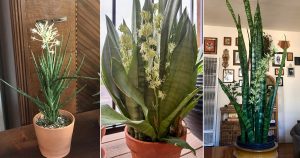This being Friday, you know I am just dying to share some of the great info I learned in my Master Gardener class. Yesterday’s class was taught by a highly regarded entomologist and was all about the insects we’re likely to find in the typical Southern California garden. While listening to the lecture and dutifully jotting down notes, I noticed a theme. Gardeners apparently often think that their garden is infested with bad bugs, but the critter they are squishing left and right is actually a good guy.
With that in mind, I thought I would peruse the UC Integrated Pest Management website for some information about insects that you might not realize are beneficial to the plants growing on your balcony or patio…
Assassin Bug
I used to see these guys at my old apartment all the time. At first I thought they were pests, but my neighbor’s friend is a Master Gardener and he informed me that they were actually a beneficial insect that preys on a wide variety of pests.
From the University of California:
Assassi bug adults and nymphs are often black, reddish, or brown. They have long legs; a long narrow head, round beady eyes, and an extended, 3-segmented, needle-like beak. Nymphs are quite small, 5 mm (1/4 in) in length when they hatch and grow to an adult size measuring approximately 2 cm (3/4 inch). . . . All assassin bugs are predators, some species feed on insects while others feed on the blood of mammals. Insect-feeding species eat a wide variety of small to medium-sized insect prey including caterpillars, leafhoppers, other bugs, and aphids.
Syrphid, Flower, or Hover Flies
A neighborhood kid once pointed at a syrphid fly and told me it was a wasp that would probably sting me if I wasn’t careful. I looked at the insect in question and thought it was a relatively harmful bee and decided to go about my business. But when I got home and decided to try and figure out exactly what the black and yellow flying insect was, I discovered it was probably a syrphid fly. Even less harmful than a bee…
From the University of California:
Syrphid flies are regularly found where aphids are present in agricultural, landscape, and garden habitats. Adults of this stingless fly hover around flowers, have black and yellow bands on their abdomen and are often confused with honeybees. . . . Adult syrphid flies feed on pollen and nectar, while it is the larval stage that feeds on insects. . . . A single syrphid larva can consume hundreds of aphids in a month. Not all syrphid fly larvae are predaceous, some species feed on fungi.
Minute Pirate Bugs
I’m including these guys because the name is awesome and they’re very common in Spring. They also like to nosh on some of the most annoying pests we container gardeners see on our plants: thrips, mites, aphids, whiteflies, and small caterpillars.
From the University of California:
Adult minute pirate bugs are small, 2-5 mm (1/12 to 1/5 inch) long, oval, black to purplish with white markings, and have a triangular head. Adults can be confused with plant bugs in the family Miridae, which are generally larger, have longer antennae, and only have one or two closed cells in the tip of their forewings. . . . They are generalist predators and are often the first and most common predaceous insects to appear in the spring. Minute pirate bugs are common insect predators in many crops including alfalfa, corn, small grains, cotton, soybeans, and tomatoes as well as on ornamentals and landscapes. Adults and nymphs feed on insect eggs and small insects such as psyllids, thrips, mites, aphids, whiteflies, and small caterpillars. Commercially available Orius spp. are sometimes released in greenhouses to control thrips.
What beneficial insects have you seen in your garden?







